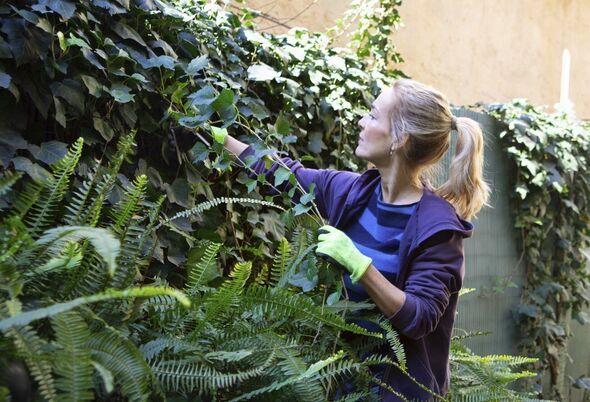
A gardener has explained the 'best way' to banish ivy for good to stop it creeping back into your garden. English ivy may be a native species in Britain, but its invasive tendencies can overshadow other plants, hogging nutrients, light and moisture, and even stunting their growth.
What's more, unchecked ivy can scale walls and fences, burrowing into crevices and potentially wreaking havoc on structures. But fear not, as Brittany Bailey from Pretty Handy Girl, a whizz at gardening and DIY, claims she has the "absolute easiest" solution to rid your green space of ivy and prevent its return.
She said: "No back-breaking pulling or bending over. This is truly the best way to remove English ivy."
To effectively dispatch English ivy from your abode and garden, you'll need sturdy work boots, a long-sleeved shirt, trousers, gardening gloves, and safety goggles.
Brittany said it's a really good idea to wear proper clothing when tackling ivy removal, given that it often harbours pests, including spiders and rodents, so ample protection is paramount. The eradication process kicks off with strategic ivy cutting for optimal results, then applying either a chemical herbicide or a homemade natural concoction to finish the job, reports Devon Live.
Ivy's waxy leaves make it a resilient foe in the garden. However, by slicing through its vines, green-fingered enthusiasts can inflict an "open wound" that aids in the absorption of ivy-destroying solutions. When attempting to control this hardy plant, employ loppers or pruners to sever the ivy at ground level and then cautiously tease out the roots.
It's vital, though, to avoid a complete tear-off to prevent damage to the underlying surface. Brittany advised: "Resist the urge to pull the vines off because it can damage the bark. Once the ivy dies the greenery will turn brown and will eventually fall off."
For terrestrial ivy infestations, a lawn mower might speed up elimination. But if you want to do this, make sure the area is clear first.
For total ivy eradication, the guidance is to opt for a herbicide with glyphosate, triclopyr, or imazapyr. Should you prefer an environmentally friendly method, Brittany proposes a DIY concoction.
She said: "If you want to go natural, you can use one gallon of white vinegar mixed with a teaspoon of dish soap, just be very careful not to get this mixture on any plants or trees you want to keep."

Within seven days, the ivy typically starts to perish and loosen its grasp, simplifying the task of raking up any lingering vines on the soil.
Brittany concluded: "If any roots resist raking, use a hoe to dig the roots out. This process will be much easier after a rainy day as the ground will be softer."
Keep a vigilant eye on the area where the ivy once was for several weeks to ensure no new shoots begin to sprout. All in all, she believes the method is the most effective way to permanently banish ivy from your garden.









